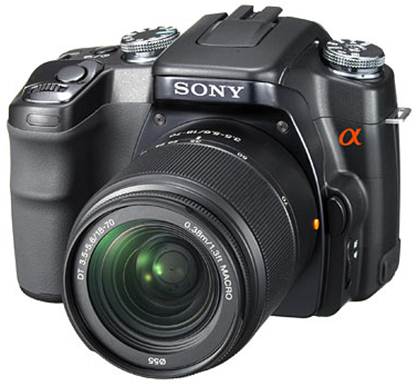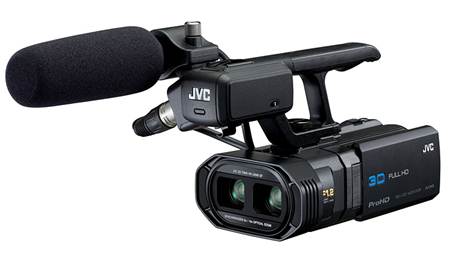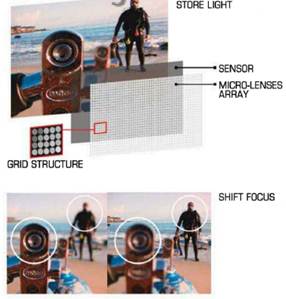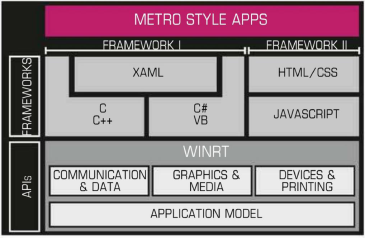Photo
Single lens reflex camera – OLED Viewfinder

Although electronic viewfinders in
DSLRs are currently the joke of the industry, this technology will fall into
serious discussion in 2012. The advantages of electronic viewfinders come to
play when faced with dark situations, providing itself as a solution for poorly
lit environments in competing with optical viewfinders. The OLED viewfinder
presented lately by Sony will be setting new standards. It will go into the
market with a 2.3 million pixel electronic viewfinder, possibly the best
resolution there is. Thanks to its OLED technology, it can come up with bright
and high-contrast images, even for images in low lightning. Apart from this, it
can show 100% of the image transferred from the sensor, meaning no parts of the
image are lost on the edges of the viewfinder. Sony in now showing how things
ought to be. The competition will certainly pick up in 2012.
Cameras – 3D images

Digital cameras and camcorders will be
able to shoot more 3D images in 2012. Three technologies often go in work in
creating 3D images: camcorders mostly rely on double lenses where one lens
captures the image for the right eye and the other one captures the image for
the left. Both parts of the image is them combined by the processor to create a
3D image. As there is only one sensor for both images, both of them have to be
a half-resolution reach. The other way to capture 3D images is to shoot both
parts of the images with time lags. This way, even panoramic images can be
formed in 3D. However, this technology is not suitable for videos due to the
time lag in the images. Sony’s new technology is the one capable of capturing
both images simultaneously with only one lens. To achieve this, there is a mirror
behind the lens which channels both parts of the images in full resolution to
different sensors.
Light-field cameras – Never Having to
Take Blurred Photos Again
You
see the perfect subjects, and you
press the shutter button… only to realize afterwards that the image is
blurred
out, or the wrong part is in focus. Such a common error won’t exist with
a
light-field camera. With just a click to a part of the finished photo,
the
software will automatically change the area of focus. There is no
possibility
of a ruined image at all. The trick here works contrary to classic
cameras. The
light-field camera doesn’t save a 2D image, but really a 4D light field,
i.e.
the information of how the light-rays are spread in the area. The camera
therefore doesn’t focus on any area, and it processes the intensity and
angle
of incidence of the light rays. Hundreds and thousands of micro lenses
are
present in front of the image sensors depending on the camera. In order
to take
a 16-pixels photo which records a 4D light field, a research team from
Stanford University required 90,000 lenses. These cameras are already in
use in the
industry, and they are expectedly too expensive for the consumer market –
until
now. Lytro,is, for the first time, trying to capture this market. The
company
has yet to disclose just how many megapixels their device should have;
they’ve
only specified 11 megarays – that’s the number of light rays which can
be
captured by the micro lenses. The Lytro camera would cost around 400
Euros ($540).
Store
light
Light-filed cameras do not store a
subject pixel by pixel, but measure and capture the light-rays.
Micro-lenses
array
Each lens breaks the light
differently. The sensor can also store the direction of light besides the
strengths.
Grid
structure
The camera consists of up to 90,000
individual lenses.
Shift
focus
The taken photo is only the raw
material. The software determines only in retrospect how the focus progression
should look like.

Internet / Software
HTML 5 – The end of Plug-ins
The end of browser plug-ins is coming
closer in 2012. With HTML5, which is the new version of description language
for websites, have audio, video and graphic elements directly integrated into
it. This would make plug-ins like the Adobe Flash Player obsolete. Mobile game
developers are already programming their works to be compatible to the
corresponding HTML5 standard. Though the development of HTML5 is still in
progress, the finished parts can readily be used. The latest versions of almost
all browsers support the current HTML5 specification. This also include the new
categories of individual elements of websites, such as navigation and articles.
This enables search engines to function even faster and more accurately.

LTE in the city – Faster Connectivity
As
the New Year settles in, mobile
communication operating in cities may have the new, faster communication
standard called Long Term Evolution (LTE). The tariffs are granted to
the
providers so that LTE can be used either for smartphones or tablets or
as a
landline substitute to DSL. Theoretically, the new standard can reach
100Mbit/sec, significantly faster than what that’s available now. In
Malaysia, LTE is currently being rolled out, slowly and surely. DiGi has
already posted up
on their webpage stating that their recently announced ‘The Tomorrow
Network’
modernisation effort will include equipping their network sites with LTE
capabilities. You can expect more news from other providers as they roll
out
their plans as well.

Windows 8 – Intelligent Apps
With Windows 8, Microsoft is
introducing a new user interface which orientates closer to the Windows Phone
7’s interface. The strengthened HTML5-based Metro apps will play a major role
which Microsoft wishes to market via a new Windows Store. In the best case
scenario, the apps should be connected with the SkyDrive so that the
applications will save our information online and users can seamlessly switch
between PCs and tablets. Microsoft has introduced the new API WinRT with the
ranges ‘Communication & Data’, ‘Graphics & Media’ as well as ‘Devices
& Printing’ as the interface for this app. The apps can be developed with
two different frameworks; with the first one, you can write you applications in
the acquainted languages C/C++, Visual Basic and XAML. With the second
framework, you program in HTML and Javascript. The shortly arriving Microsoft
Visual Studio 11 is used as the development environment.
App
Composition
Metro apps can be produced inter alia
in HTML5 (framework II). The new APIWinRT is used as interface for the system.
